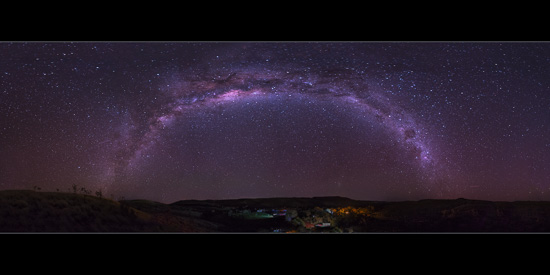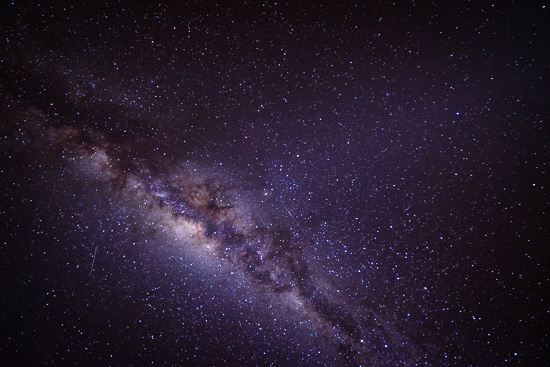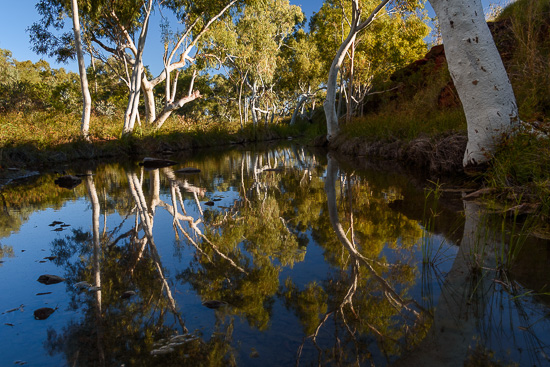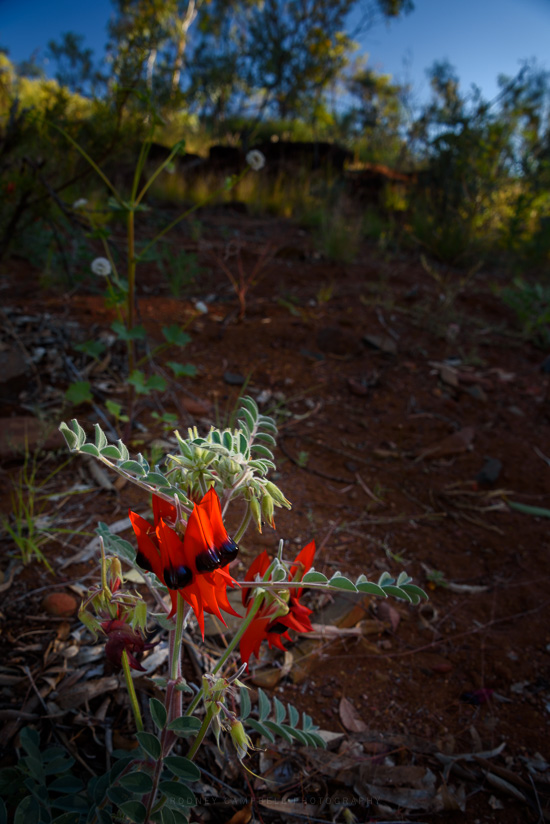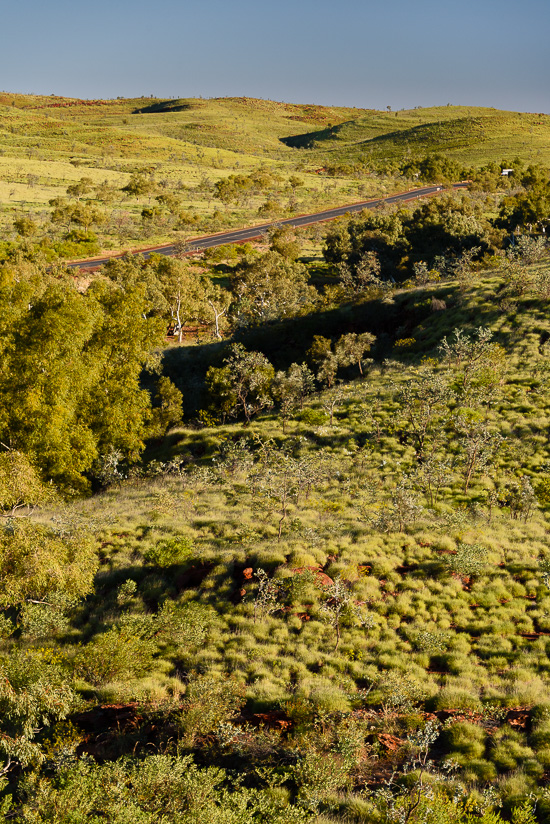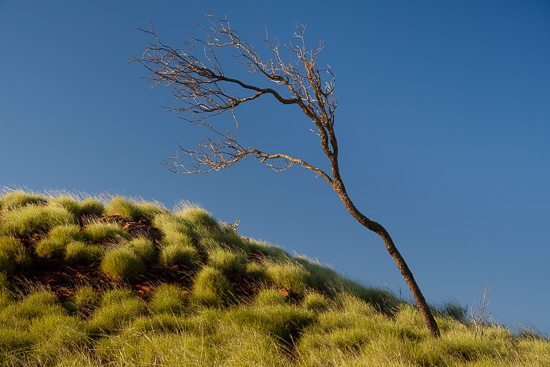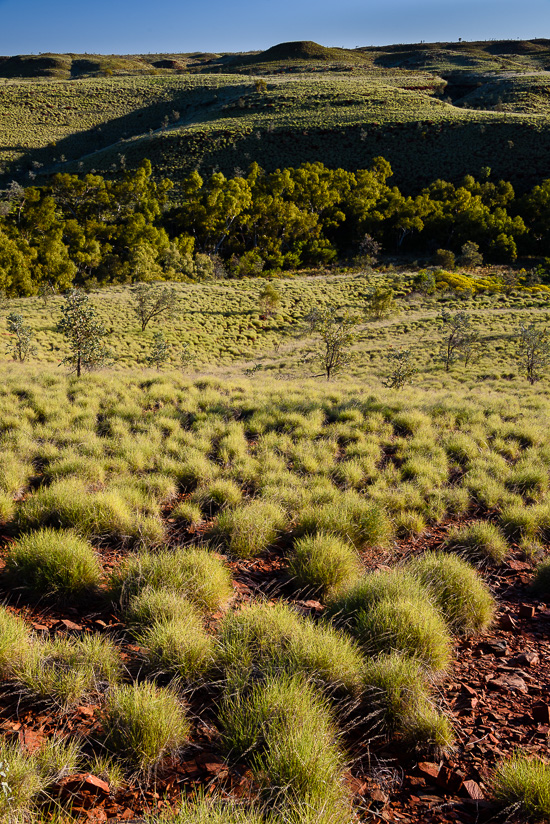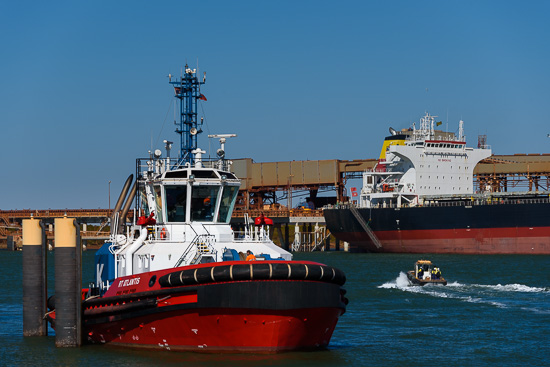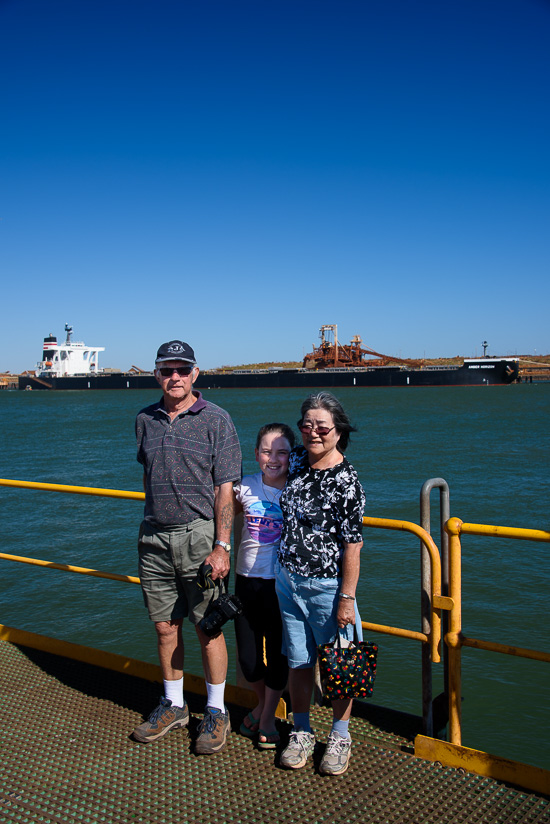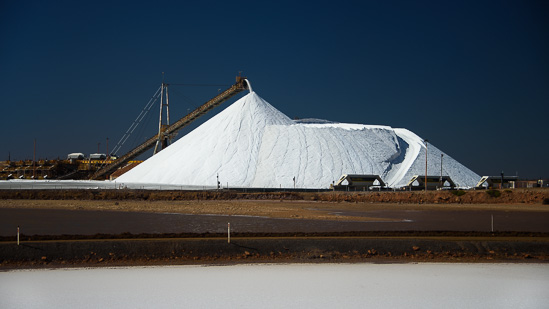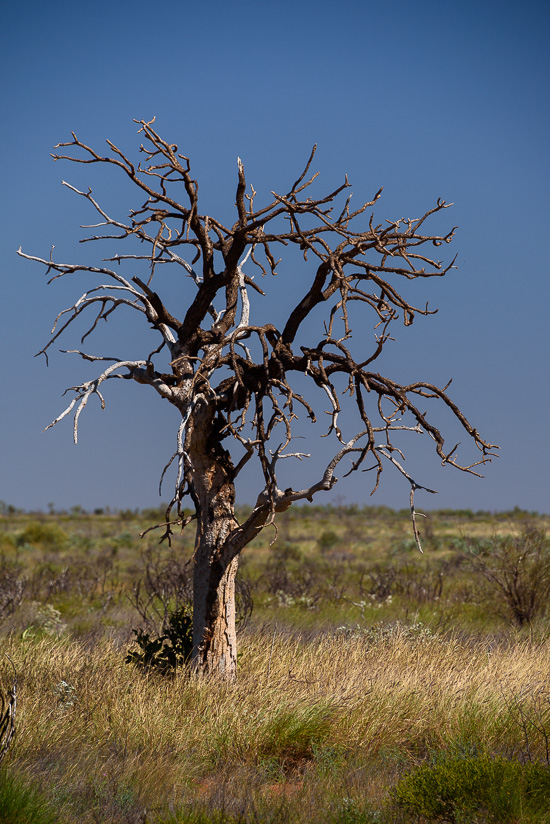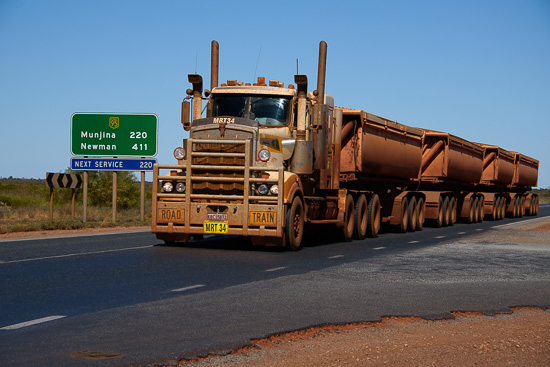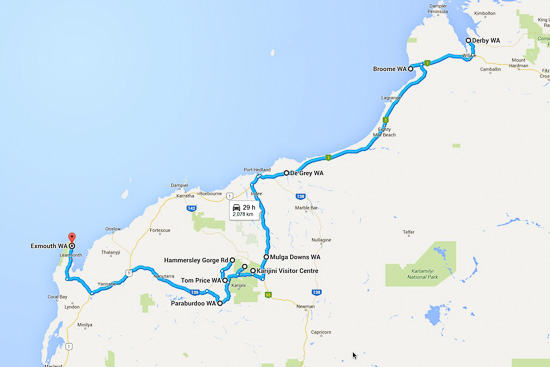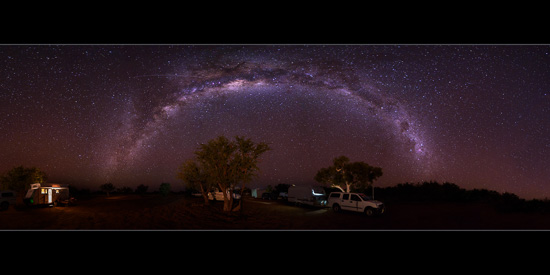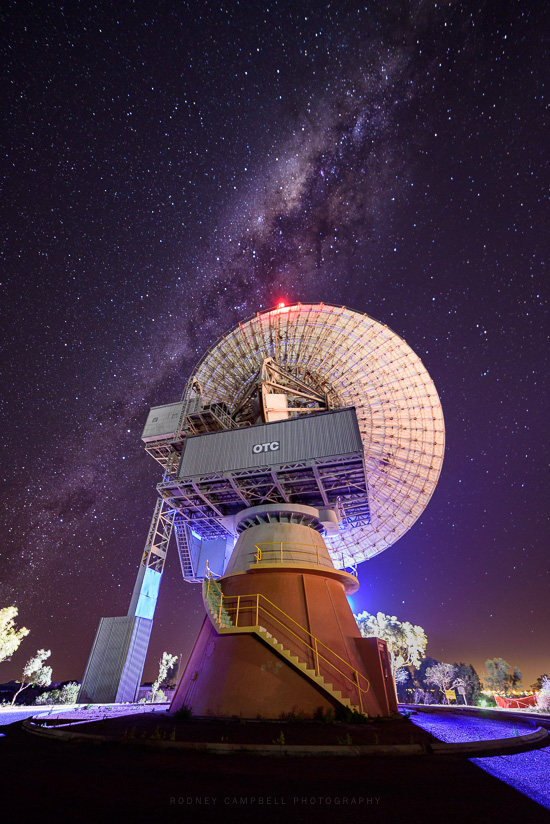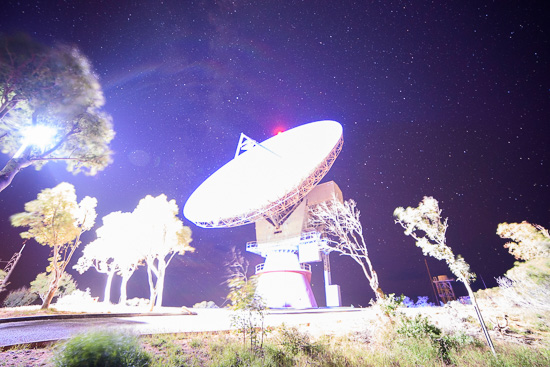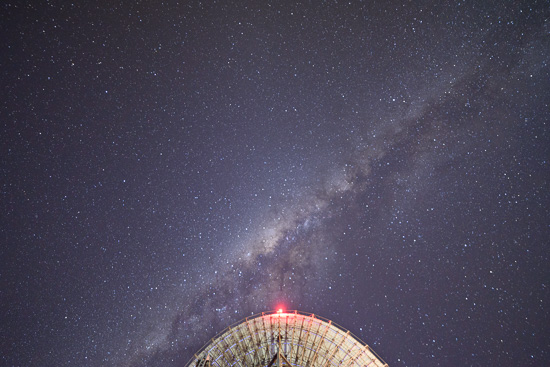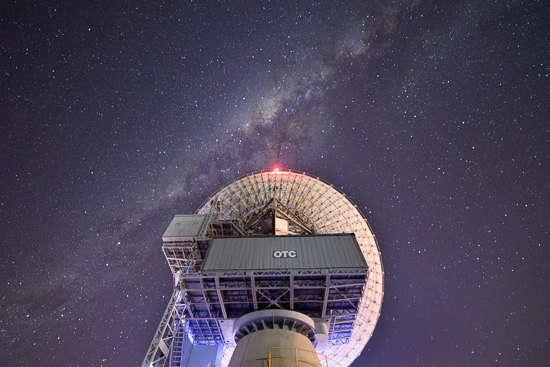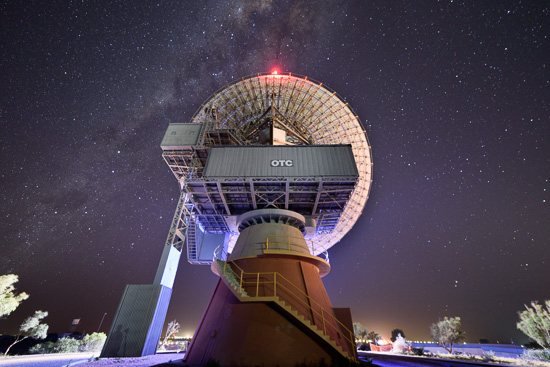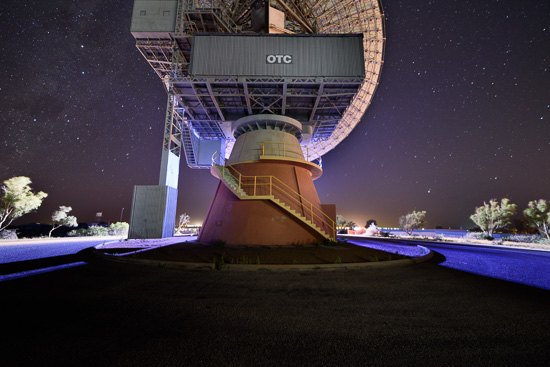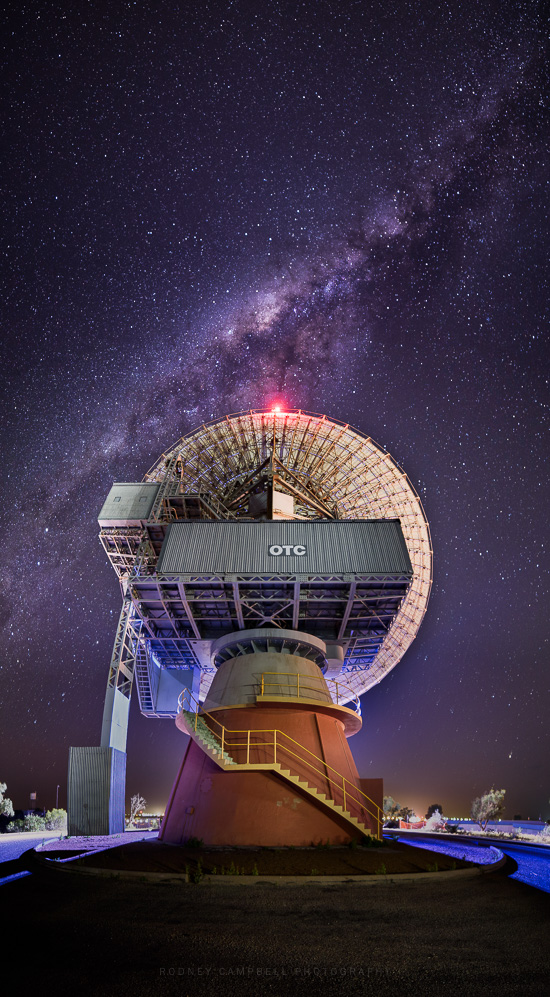Archive for November, 2015
Bea under the Stars…
by Rodney Campbell on Nov.16, 2015, under Life, Photography
Another night in remote outback Australia, another chance to shoot under these amazingly dark skies at Bea Bea rest area.
Sunset was at 5:37PM and moonrise was going to be at 8:37PM so my window of opportunity was going to be short. No startrails again – just some static milky way action.
After dinner I headed up the hill next to our Bea Bea camp site where I’d been earlier in the afternoon. I’d arrived and was setup for shooting by 6:50PM.
Bea Bea Archway
Note: These photographs (especially the wider shots) look much better when larger – so click any of the images below to see larger versions in an inline overlay slideshow gallery viewer.
There was a little light pollution over the horizon so I couldn’t push the ISO too far (ISO 4000 was about the best I could hope for). The main problems I had was with the brightness of the Bea Bea campground nestled in the hollow below me and from the road trains coming through at regular intervals.
At least with the later I could time the individual shots to coincide with when they’d driven out of the scene. This just meant there was a lot of waiting around for the right moment :).
I took two sets of vertical frames to later stitch into panoramas (the first with 9 frames and the second with 8). Then I tried some single frame milky way images but anything which tried to include the campground below was nuclear. I settled on a single frame looking up at the galactic core with a couple of shooting stars.
Shooting Stars
Thankful to be out under the stars again… Finished for the evening I packed up at 7:45PM and headed back down to camp.
Bea Bea…
by Rodney Campbell on Nov.14, 2015, under Life, Photography
An interesting name for a creek and a rest area but Bea Bea Creek Rest Area was a little gem of a spot.
Nestled down on the creek amongst the ghost gums with tall green spiniest covered hills all around. This was another rest area with lovely photographic opportunities everywhere within easy walking reach.
Bea Bea Reflective
Note: These photographs (especially the wider shots) look much better when larger – so click any of the images below to see larger versions in an inline overlay slideshow gallery viewer.
Desert Pea
I climbed up to the top of the hill overlooking the rest area with camera in hand. I was actually doing a recce of the area for a potential evening shoot under the stars, but the location presented some fabulous views in the late afternoon light…
Mounds of Green
Windswept
I know it looks like these lovely green spinifex tufts are soft and fluffy grasses, but I can assure you they are a devil in disguise. I warn you – do not walk through these with bare legs – jeans and good shoes are a must!.
Spinifex is the common name referring to grasses in the related genus Triodia. Triodia is native to inland Australia and refers to a group of spiny-leaved, tussock-forming grasses.
Those long spines which look like soft grass are actually quite firm spikes like long needles and they aren’t very pleasant when they are jabbing into you.
Tufts
Port Hedland…
by Rodney Campbell on Nov.12, 2015, under Life, Photography
We made a quick visit into Port Hedland to stock up on supplies and also see some of the massive operation of this iron ore dominated port.
Port Hedland
Note: These photographs (especially the wider shots) look much better when larger – so click any of the images below to see larger versions in an inline overlay slideshow gallery viewer.
Port Hedland is known by the Indigenous Kariyarra and Nyamal people as Marapikurrinya, which either means “place of good water”. It is the world’s largest bulk tonnage export port, exporting over 350 million tonnes per annum. It is also the second largest town in the Pilbara region of Western Australia.
Of course there were massive container ships all lined up both in and outside the port waiting to load the iron ore.
Located between Port Hedland and South Hedland (18km away) are the large salt hills of Dampier Salt, a subsidiary of mining giant Rio Tinto. These large mounds have almost become a tourist attraction in their own right.
Saltberg
We didn’t spend long in Port Hedland (or South Hedland) – just long enough to do some shopping, have a bite to eat and start heading into the Pilbara.
Heading out of town you see many of these once clean and white road trains – now red from the iron ore dust.
Road Train
Resting Under the Stars…
by Rodney Campbell on Nov.11, 2015, under Life, Photography
82km north-east of Port Hedland, 71km south-west of Pardoo Roadhouse on western side of Great Northern Highway and northern side of river lies De Grey River Rest Area.
There were plenty of people resting here for the night and it was another opportunity for me to get out, walk the ten metres required and setup to take some milky way shots of the clear night skies :). The only things I had which I could include in the foreground were these few tress and our vans and cars. Not awesomely inspiring or amazing but the best I could do on short notice :).
Resting Under the Stars
Note: These photographs (especially the wider shots) look much better when larger – so click any of the images below to see larger versions in an inline overlay slideshow gallery viewer.
I took seven (7) vertical frames using the Samyang 14mm at around a quarter past 7 (a little after astro twilight and less than half an hour before moonrise). The real trick here was trying to deal with the brightness of all the lights from all the vans and the few people walking about with their lights.
The milky way was high in the sky (the arch was almost vertically above rather than nice and low towards the horizon). This meant I had to angle the very wide 14mm up quite high to make sure I included the top of the arch. Given that I’m doing this all manually by hand and by eye in the dark I’m pretty happy it even stitched :).
The Story behind “The Dish”…
by Rodney Campbell on Nov.10, 2015, under Life, Photography
My winning dish image is a stitched vertical panorama composed of multiple horizontal frames taken with the D750 and the Samyang 14mm lens. It’s probably one of the hardest stitched panorama’s I’ve ever put together.
The “dish” is the decommissioned OTC Satellite Earth Station in the town of Carnarvon on the West Coast of Australia. Established jointly with NASA in 1966, the OTC Dish at the edge of town tracked the Gemini and Apollo space missions, as well as Halley’s Comet before closing in 1987.
You see the dish when you drive into Carnarvon and it’s at the entrance of the Carnarvon Space and Technology Museum. It’s actually up on a bit of a hill at the edge of town and the dish basically points towards and overlooks the town.
Calling Outer Space
I had an idea of shooting the dish with the milky way arching over the dish in the sky above. As we were only staying in Carnarvon for two days I knew I needed to just hope for good luck when I was finally there.
I went out after dinner on the first night we were in Carnarvon and drove over and parked near the entrance. I’d not actually been here before (so no recce beforehand) – thus I had to wing it all on the night.
I arrived around 9PM and after making my way up to near the dish.
Before I came here I had the idea of composing a shot sort of diagonal to the dish with the whole front face of that enormous dish in the shot and the streak of the milky way arching over the dish. I was planning to shoot from the front side and face towards it so that the town would be behind me and I’d have more open farmland and darker night skies behind it.
Unfortunately when I actually arrived at the dish at night all those plans went to hell…
It turns out the dish is lit up at night by some very powerful LED flood lights at the front. I did try in vain to setup a shot with some tree’s on the left attempting to block the lights themselves but as you can see from the test shot below all manner of problems existed. From the dish going nuclear white from the bright floods, the bright flood lights themselves adding all sorts of flare and all the trees in the way (also being overlit).
Note: These photographs (especially the wider shots) look much better when larger – so click any of the images below to see larger versions in an inline overlay slideshow gallery viewer.
My original idea wasn’t going to work – no milky way arch for me. Instead I figured I might try shooting the dish from behind and hope that if I got close enough to the dish itself that the building at the base and the dish would block out enough of the powerful flood lights. Plus it might even add a nice rim light if I could control it well enough.
I had to do a lot of work to capture some usable frames. I was basically shooting four main horizontal frames to stitch into the panorama (see below). What I did however is adjust the ISO and shoot multiple exposures for each of those four main frames with the hope that I could do something with the best exposed parts of each frame in post processing before stitching them together. Sort of like shooting panoramic milky way high dynamic range photography… but not :).
So…
For the topmost frame which is looking almost straight up, I could shoot at a relatively high ISO without much light pollution or direct ghosting from the flood lights. I shot three frames at ISO 5000, 4000 and 3200 (all 30 sec at f/2.8). Blending the ISO 5000 and 3200 frames in photoshop I used mostly the ISO 5000 exposure with just some subtle blending of the very top of the dish from the ISO 3200 frame.
For the next frame down I took four exposures – ISO 4000, 3200, 2500 and 2000. I used all four exposures as layers in photoshop and manually blended components of each with masks. The result is predominantly the ISO 4000 for the stars and bits of the other three exposures for parts of the dish.
The next frame down had six (6) exposures – ISO 3200, 2500, 2000, 1600, 1250 & 1000. In post I layered the ISO 3200, 1600 and 1000 exposures and manually blended them. Using the ISO 3200 frame for the upper part of the sky and then parts of the other two frames for the dish and the lower third of the sky.
Finally the bottom frame had five (5) exposures – ISO 2500, 2000, 1600, 100 & 800. Again in post I layered three of these exposures (ISO 2500, 1600 & 800) and blended them.
That work done, the four master frames were then stitched using Lightroom’s Photo Merge to Panorama function. The DNG was then finished in Photoshop and Lightroom and voila here we have…
The Dish
Up at the top of this post is a single 14mm frame from slightly further back and shifted as far right as I could move whilst still using the building to just barely hide those very strong blue floodlights out the front.
